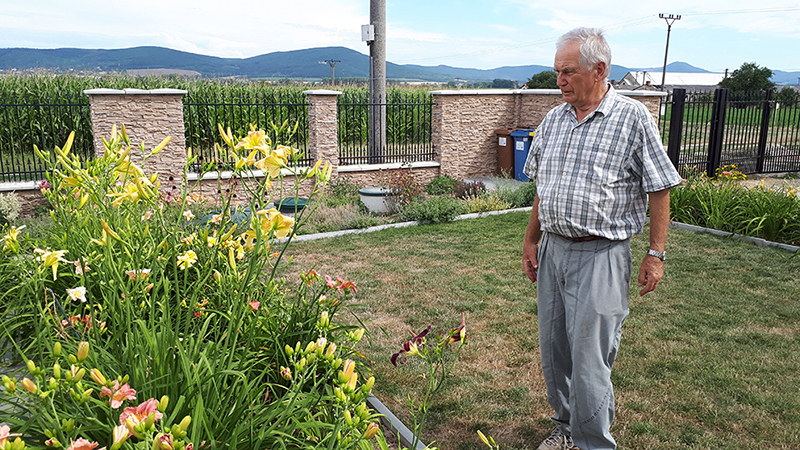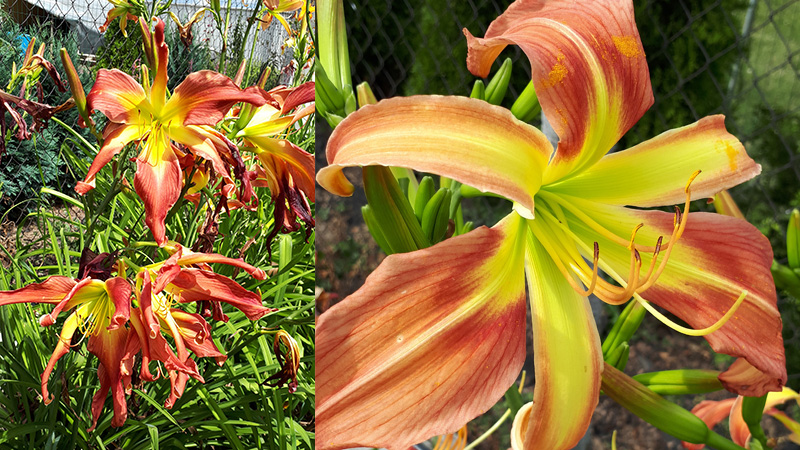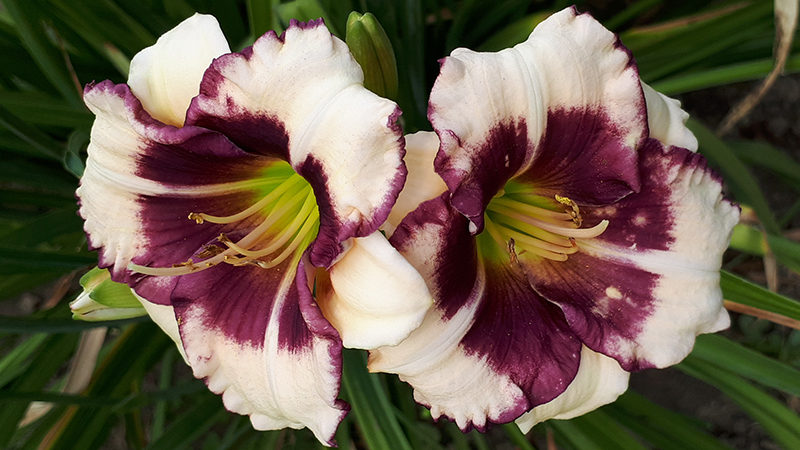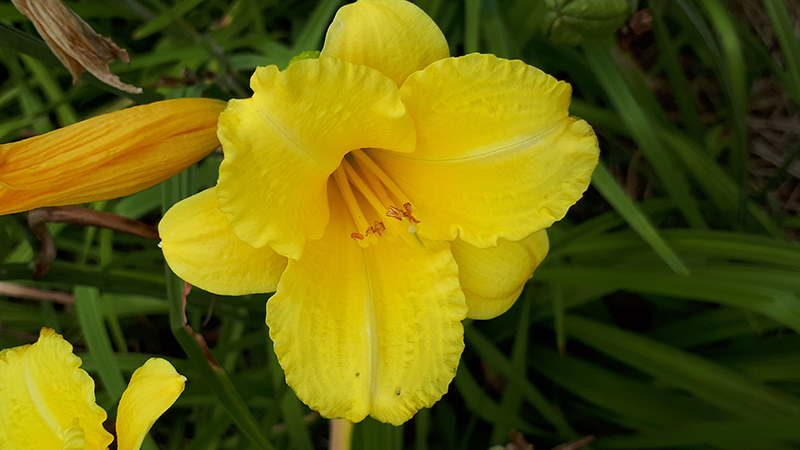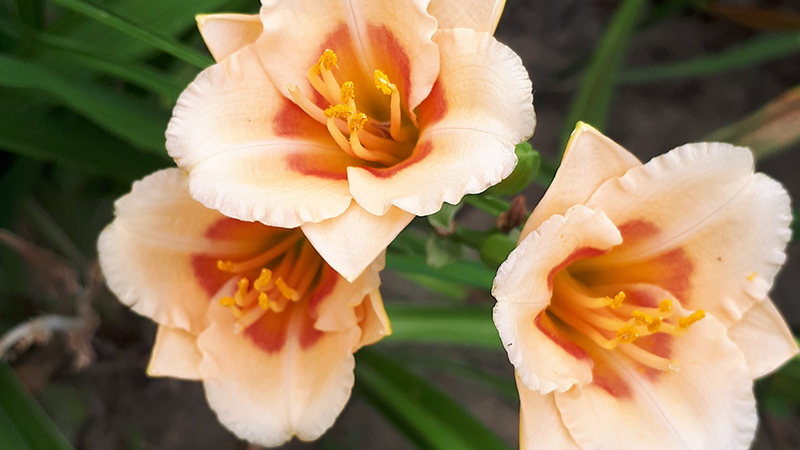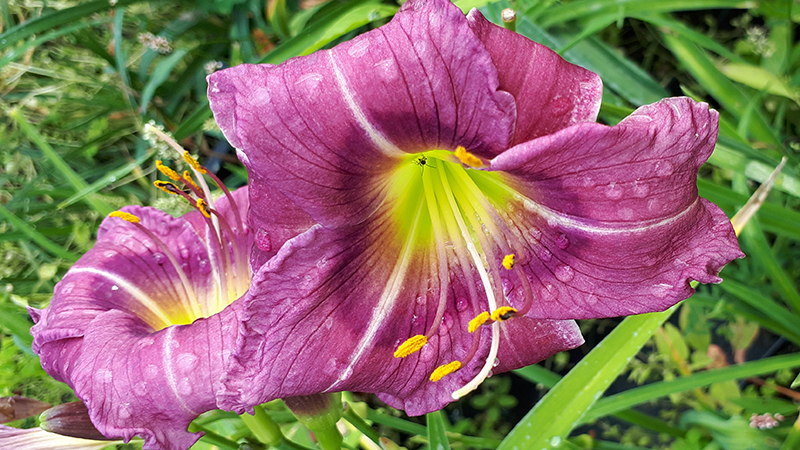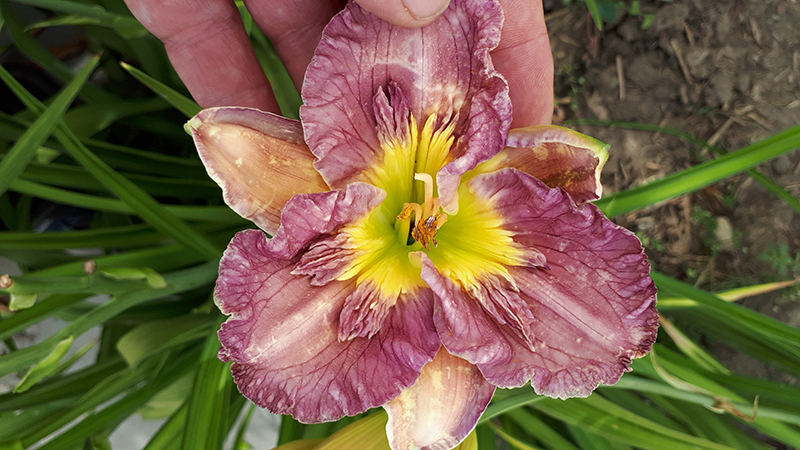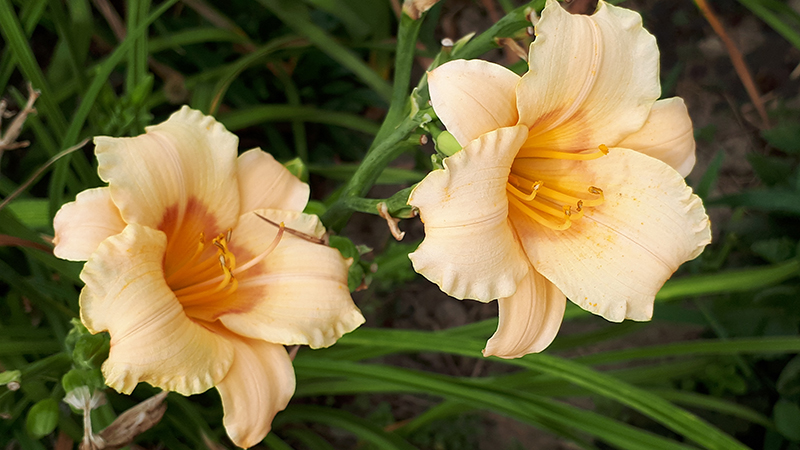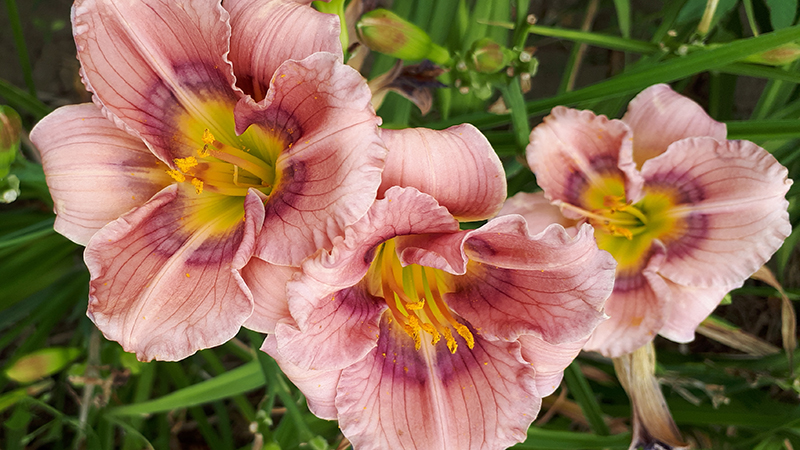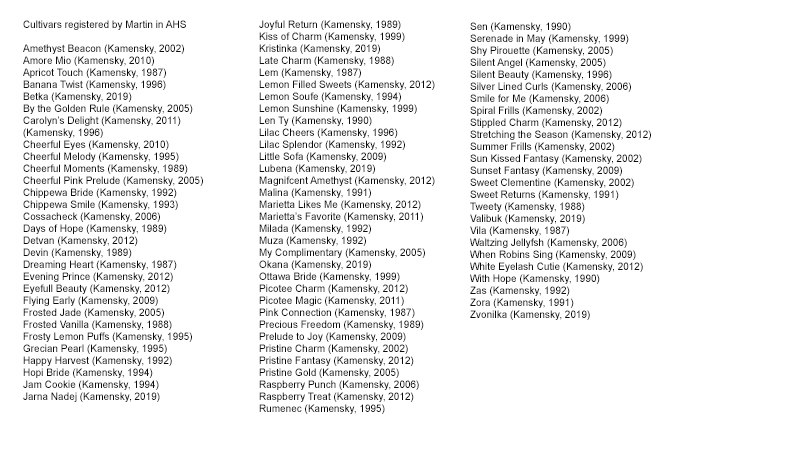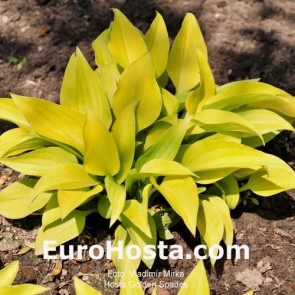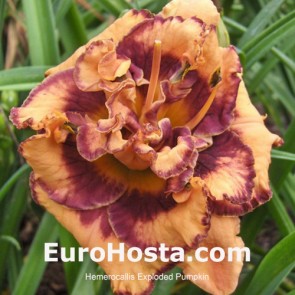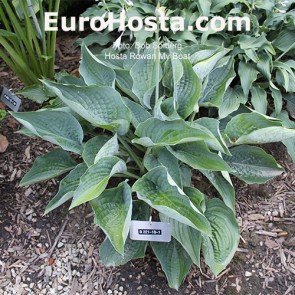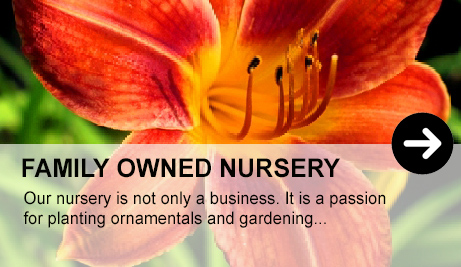Martin Kamenský and his daylilies... Text a foto: Eurohosta, jan 2019
|
In the early seventies, Martin Kamenský left Europe to work in the USA. As soon as he settled, he started to dedicate his free time to his greatest hobby – planting and breeding daylilies. Among the overseas daylily growers, he soon become known as a breeder specializing in diploid and reblooming daylily cultivars. We met him in his garden and talked a bit about his love of flowers...... When did you start with daylily breeding? My first daylily I planted in 1977. At that time, I lived and worked in Michigan, USA. Already in 1978, I have also begun to cross daylilies. Did you have a goal in your breeding program you wanted to achieve? My target was to develop daylilies which bloom all season - daylily cultivars that will bloom continuously from spring to autumn. At the beginning, the success of my breeding was small, but every year was better and better. Now, after forty years, I can say that the results are better than I expected at the beginning (smile). Gradually, I focused exclusively on diploid cultivars and I have not been breeding and planting tetraploids any more. In my breeding program, I reached long-flowering daylilies by using and choosing only such cultivars as parents, which display the repeat blooming phenotype. I pay great attention to select cultivars that start to bloom very early in the spring, in May, in some cases even in April. Most of the common daylily cultivars that you can buy in ordinary garden centers and/or from the local growers bloom in summer, in the middle of the season. Moreover, they usually bloom for 3-4 weeks at most. There are only a few early blooming-, and even less very early blooming daylily cultivars on the market. Therefore, you can get the impression that the daylilies are short blooming perennials that bloom only from the beginning of the summer, for just a few weeks. However, that is not true with many cultivars… Martin in his garden. I know that you’ve had some successes in America with yours cultivars... Not all cultivars were successful, of course, but some were... In 2009, for example, I received the Englerth Award for my work in daylily breeding. Some very well-known breeders, such as Jamie Gossard or Steve Moldovan were also awarded this price too in previous years, so I appreciate this very much. In America, growing daylilies and other flowers is very popular. Gardeners are often organized in different associations. Were you also a member of such associations? Yes, of course! Since the end of the 1970s, I have been a member of the Iris and Daylily Association. And, of course, later on I became a member of the American Hemerocallis Society (AHS), also known as the American Daylily Society. It was founded in 1946, and is a non-profit service organization, dedicated to educating people about daylilies, promoting the cultivation and enjoyment of daylilies, and fostering the on-going improvement of this perennial flower. For those who speak English, the AHS has a lot of information about daylilies. However, there are mainly local associations that do most of the work in daylily popularization. They organize exhibitions, visits of members´ gardens, lectures and selling auctions.
H. Valibuk (Kamensky, 2019) Large dark-pink UFO with a big green throat. It starts to bloom in early July. Even if it is reblooming, it is very well branched and blooms for a relatively long time. This is a great perennial, very tall with well branched stalks and huge flowers.
H. Okaňa (Kamensky, 2019) Creamy white with a dark-burgundy eye and green throat. It begins to bloom in mid-June and blooms repeatedly with minor breaks until early October.
Zvonilka (Kamensky, 2019) Pale orange with nicely shaped flowers. It begins to bloom very early. In our garden (central Europe), it begins in the first part of May, if it is not damaged by late frosts. It blooms until mid-June, then takes a short break and starts to bloom again in the first half of September. Frosts in October end its autumn blossom. It is said that daylilies are expensive perennials... The price of new daylily-cultivars is higher at the beginning - this is due to the difficulty of their breeding. Sometimes, they can be much more expensive than other perennials. However, the price of a cultivar gradually declines when the plant is grown for a longer time and there are more plants available for sale. After 40 years, you have returned to your native country, Slovakia. Was it challenging? Moving and building of a new house, all the while continuing daylily breeding is quite difficult, especially when a person is older. However, I am continuing with planting and breeding of daylilies also after returning to Slovakia. Moreover, the first results have already been achieved. I have already registered several new cultivars that I gave Slovak names. This year, for example, I registered the very early blooming cultivars "Zvonilka" and "Jarná Nádej” - Spring Hope in translation, which bloom in spring and autumn. The two small cultivars "Betka" and "Kristinka" are also early bloomers and they rebloom. "Ľubena" also blooms early, but this one blooms constantly from spring to autumn. Of course, it cannot be expected in the first year, it must first grow up, settle in a bit and get good care – suitable soil and watering when it is very dry. The cultivar "Okaňa" begins to bloom very early too and it is also a rebloomer. The cultivar "Valibuk" begins to bloom in early July and does not rebloom. However, it is a big UFO (unusual form), and I have not achieved a rebloomer in this type of flower yet. When I went back to Slovakia, many of my friends asked me to try to popularize daylilies in Europe. Of course, I promised to do it. I think the hope lies in those people who appreciate the beauty of nature to discover the beauty and variability of daylilies and their easy cultivation.
Hemerocallis Betka. Small, light apricot bloom and a yellow throat. This little one begins to bloom in early June and blooms repeatedly with short breaks until October.
The daylily Evening Prince has a pink, smaller flower with a small, darker eye above the yellow-green center. Extremely vital, long season flowering, blooms almost from spring to autumn, including rich reblooming. Excellent Hemerocallis cultivar for every perennial lover. Very suitable for beginners
Rare berded daylilies in Martin collection. What about the future? As long as my age allows me, I want to continue breeding long-flowering diploid daylily cultivars. I am already growing a number of seedlings in the garden, so there are plenty of new plants to choose from. In the spring of 2019, I expect that many large-flowered, long-flowering cultivars will bloom. Some already bloomed in the autumn of 2018, and many were quite pretty. My second goal in my breeding program is to raise miniature daylilies. I am quite successful in this and this year I registered the cultivar “Kristinka”, which is the results of many years of efforts... In mid-October 2018, I replanted many seedlings that came up this spring. There are many tiny, small, and dwarf daylilies among them. Many of my friends love the smallest the most… I hope that many gardeners and perennial growers enjoy my daylilies in the future. I also wish to thank Eurohosta for giving me the chance to offer my cultivars trough their webpage to every daylily lover. Thanks for your time...
Hemerocallis Ľubena (Kamensky, 2019) Creamy peach bloom with a pink eye and green throat. It begins to bloom in early June and blooms repeatedly until October. Its continuous blossoming only ends with the first frost. Lubena is the fourth generation from Stella d'Oro ('When Robins Sing' × seed.).
The daylily Eyefull Beauty is one of the best cultivars fom o Martin Kamenský. Rich bloomer, it reblooms as is typical for all of Martin´s hybridization program.
© This text and photos are protected by intellectual property rights under the Law no. 618/2003 Coll. (the Copyright Act). |
||||

